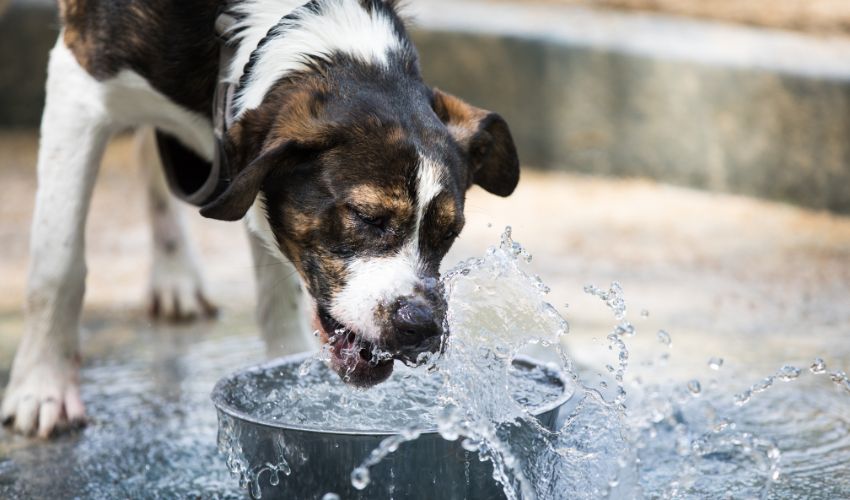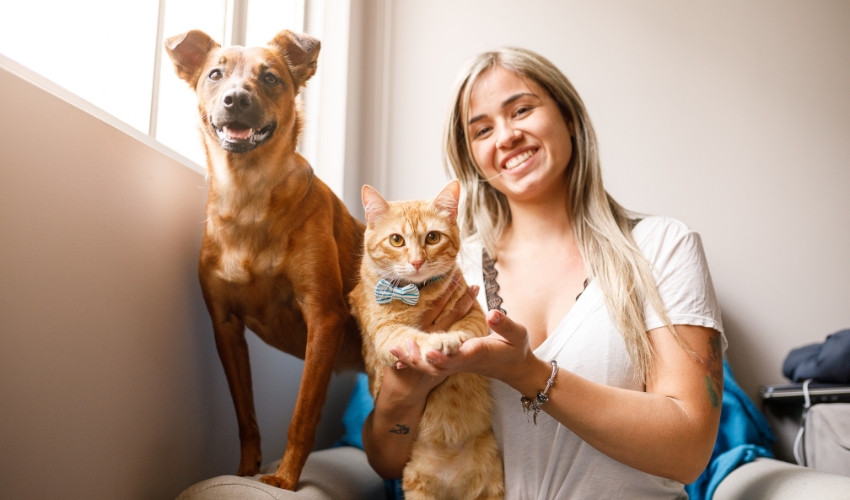Navigating Diabetes Risks in Cats and Dogs
Have you heard of diabetes in cats/dogs?
Diabetes isn’t limited to humans, our pet cat and dog can get them too. And just like us, humans, there are also things that put our fur buddies at risk for certain illnesses. Diabetes in cats and dogs can be caused by different factors. Some are genetic, while some are environmental. Like in humans, Type 1 Diabetes means that your pet is unable to produce any insulin, so, once diagnosed, they will depend on insulin treatments for life. Although extremely rare, Type II Diabetes means your pet’s pancreas produces some insulin but not enough, or doesn’t respond to it properly, which also causes a build-up of the hormone.
There are certain breeds of cats and dogs that have a genetic predisposition for diabetes. Some breeds have genetic predisposition for diabetes, while others don’t. Samoyed and Australian terrier have frequently been reported at high risk of development of diabetes in dogs. While, Burmese, Maine Coon, and Siamese are more likely to develop diabetes than other cat breeds.
Dogs are more likely to have Type I Diabetes. This form of diabetes is actually considered rare in cats. Approximately 80% of cats have Type II Diabetes. Due to the differences in these types of diabetes, dogs and cats with diabetes are treated and managed differently. Diabetic cats are susceptible to chronic pancreatitis, ketoacidosis, and nerve degeneration. Hence, early detection and treatment is quite important.
What are the Signs and Symptoms of Diabetes In My Pet Cat or Dog?
There are a lot of signs and symptoms that are associated with Diabetes. However, clinical signs that are most commonly recognized are related to impaired metabolism, such as
- Polyuria or increased urination
- Polydipsia or excessive thirst
- Polyphagia or feeling of extreme, insatiable hunger
- Weight loss
Once you see these signs of diabetes in your furbaby, it is important to have them checked by your veterinarian as early as possible. Your vet will check the history of your pet, do a physical exam, and will do routine laboratory tests to confirm the diagnosis. The vet will test your dog’s urine for the presence of glucose and test your dog’s blood. A diagnosis of diabetes will only become definite when glucose is found at a high level both in the urine and in the blood.
What Puts My Pet Cat and Dog at Risk for Diabetes?
Obesity
Obesity in pets is when they accumulate too much body fat. A cat or dog is considered obese if they weigh over 20% more than the recommended weight for their breed and gender. Obesity is a very common problem in dogs due to too many calories intake and not enough calories burned.
All pets can develop diabetes at any age, but obese cats and dogs are at the highest risk. According to studies, pet obesity is on the rise. Since Covid-19 happened and lockdowns were implemented, around 33% of fur parents claimed that their fur baby became overweight during the pandemic.
Genetics
Diabetes can occur in any breed. However, just like humans, genetics is also a great factor of developing diabetes. There are certain breeds that are more susceptible to having diabetes. If your pet has a family history of diabetes, then he or she may have an increased chance of developing the condition.
Dog Breeds who have a higher risk of developing diabetes include Poodles, Beagles, Dachshunds, Miniature Schnauzers, Samoyeds, and Pugs. Cat Breeds who have a higher risk of developing diabetes include Burmese, Maine Coon, and Siamese.
Gender
For your canine buddies, is your pet dog spayed or not? Unspayed female dogs are twice as likely as male dogs to suffer from diabetes. The reason for this is that hormonal changes can affect your furry friend’s insulin regulation, which can likely lead to an increase of developing diabetes. The hormonal fluctuations can also make diabetes harder to control. However, once spayed, her diabetes can be managed just as effectively as a male dog with diabetes.
For your feline fur babies, male cats have greater risk for developing diabetes due to two factors. First, male cats have lower insulin sensitivity values than female cats. Second, male cats are predisposed to obesity
Certain illnesses
Illnesses like chronic pancreatitis, cushing’s disease, or those that require long-term use of steroid medications such as prednisone increases the risk of your fur baby having diabetes, Cushing disease when left untreated or not managed properly can lead to diabetes, while chronic pancreatitis can cause significant damage to the pancreas which can lead to the development of diabetes. There are also certain autoimmune disorders and viral diseases that are said to be a possible trigger to diabetes.
Age
Diabetes in our furry companions can occur at any age, but it is more common in middle-aged and older pets. When diagnosed with diabetes, dogs are usually 4-14 years of age while cats are older than 6 years of age.
My Fur Baby is Diagnosed with Diabetes, What Do I Do Now?

Diabetes is manageable, but not curable. Once your fur baby is diagnosed with Diabetes, you have to work with your vet on how you can make your fur baby comfortable and healthy.
Dogs and cats with diabetes usually require a lifelong treatment. Management usually involves a combination of a special diet, weight reduction, good fitness regimen, insulin, and sometimes, oral hypoglycemics. The key to managing your diabetic pets is to keep their blood sugar near normal levels and avoid too-high or too-low levels that can be life-threatening.
An estimated 1 in 300 dogs and 1 in 200 cats develop the disease during their lifetime and this statistics keep on rising. It’s important for pet owners to recognize the risk factors and signs.
Catch the signs before it’s too late! Early detection leads to early treatment.

















